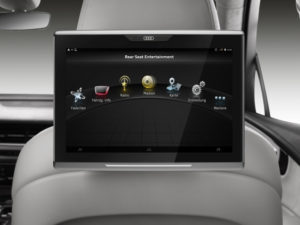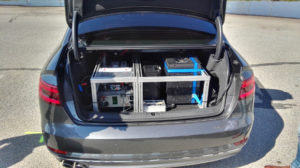When it comes to the cutting edge, it often comes from unexpected quarters. Take the current wave of Internet of Things (IoT) and machine to machine (M2M) communication. One would have thought that the cutting edge of development would lie with the industry stalwarts in networking, sensors and data processing. Arguably, this is not the case.
In recent times, the automotive industry has stolen a march as the realisation that fully computerised, sensored and connected cars will be the way of the future.
Transition
While the achievements of companies such as Tesla and Google in autopiloted and self-driving cars have been in the news for various reasons, the work of other companies has been carrying on in the background, establishing the foundations for the new paradigm of car use and ownership. This will see the car continue its transition from a mere mode of transport to being an entertainment hub, information source, sensor platform and personal assistant.
One of the companies at the forefront of such developments is Audi. From its early work with models such as the 2002 A8 where control and display units were separated, to the development of modular entertainment, information and connectivity systems from 2012 and beyond, Audi has pushed the boundaries of in-car technology, broadening the capabilities of safety, performance and monitoring, as well as information services, entertainment and communications.
Regular readers will have followed such developments through our reviews of the 2011 A6 C7, 2015 TT, 2016 A4, and the R8 V10 PLUS supercar. However, with an eye to the future, Audi has opened up on connected cars, smart cities, self-drive, the virtual cockpit and virtual showroom, and the car as personal assistant.
Swarm data
The car of the future, according to Audi, will not be a lone vehicle driving through a disconnected environment. Instead, said, Dr Florian Netter, project lead, software engineer and technologist, Coordination Software Competence Centre, Audi AG, intelligent cars using swarm data will communicate constantly with other cars, road signs and traffic control systems, as well as smart connected devices around them, such as smart phones, tablets and Wi-Fi networks.
These smart cars will be situationally aware, able to communicate to gather information about road conditions, traffic, weather and other parameters that can affect driving.
The car will communicate with oncoming traffic to discern potential hazards, such as compromised road conditions, traffic jams or obstructions. They will use such swarm data to best inform the driver or take action to avoid.

New infotainment systems can do so much more than simply play music, or navigate
Dr Netter said the current Audi sensor and control suit consisted of front facing laser, radar and ultrasonic sensors and cameras. There are also corner radar sensors, with rear facing laser and radar sensors too. These are all coordinated through the zFAS control unit and the information processed by the central computer. This allows the car to have an autonomous awareness of 200 metres front and rear. When this is augmented by the potential swarm data from other vehicles, infrastructure and devices, it presents an unprecedented opportunity to enhance safety and control.
Cooperative efforts
The key element of this effort though, is cooperation. Any one manufacturer ploughing a lonely furrow would not succeed in such circumstances, as many such failed technologies in the past attest. Audi said it is working with BMW, Jaguar LandRover and Daimler to ensure that common, open standards are developed and available to all manufacturers to ensure that the cars and enabling infrastructure of the future can communicate to the benefit of all.
Critically, the cooperative effort is also open to public bodies and other organisations to allow the system to be integrated with existing smart cities projects and implementations.
In support of these efforts was the acquisition by the consortium of German automakers of the HERE mapping company, from Nokia for a reported $3.1 billion (€2.76 billion). The idea is that a common mapping standard would form the basis of a layered system that would build up to support varying services levels, from pure navigation and situational awareness, to assisted driving, city integration, swarm data sharing and eventually full autonomous driving. Audi refers to this progression from what it termed ‘standard definition’ mapping through to high definition and eventually mapping and information layering that represents a “reality index”.
Control network
Audi has demonstrated a practical implementation of the full car platform, driving on a traffic control network, complete with intelligent signage, central control and even smart parking spaces, albeit in miniature format.
With the help of university students, Audi demonstrated cars driving on a road network where speed limits, hazard notifications and even parking availability could be live updated to road signs, as well being accessible via a control network. The self-driving cars were not only able to dynamically adapt to changing speed limits, they were also able to take avoiding action for broken down cars, even as they were obscured by corners. The cars were also able to autonomously park when spaces became available in a crowded urban setting.
Despite the demonstration being in miniature format, all of the technology employed is currently available.
Another key development for Audi is around the use of augmented and virtual reality.








Subscribers 0
Fans 0
Followers 0
Followers